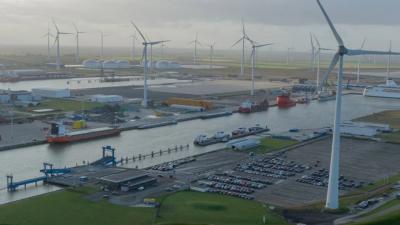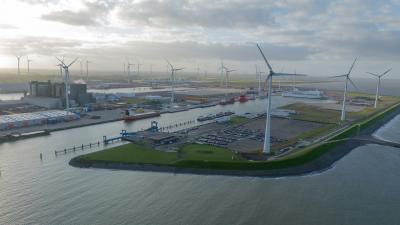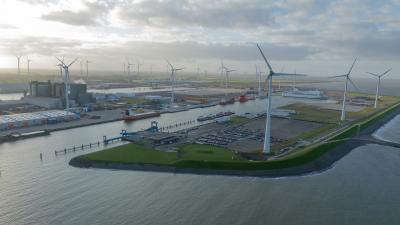
Foundation and International Coalition for Sustainable Infrastructure announce Foresight Review on Nature Positive Engineering
Lloyd’s Register Foundation has today announced a new Foresight Review on Nature-positive Engineering (NPE).
This page is approximately a 4 minute read
This page was published on

Dr. Suneetha Subramanian, Research fellow, United Nations University
This blog is authored by Dr. Suneetha Subramanian, a member of the Advisory Committee for Lloyd’s Register Foundation’s Nature-Positive Foresight Review and research fellow at the United Nations University’s Biodiversity and Society Programme.
Dr. Subramanian is an expert in biodiversity and human wellbeing with a focus on equity, joint implementation of policies and actions on health and biodiversity at the local level, and socio-ecological resilience. She is with the International Partnership for the Satoyama Initiative, a global partnership working to realise societies in harmony with nature.
As climate and biodiversity crises intensify, a nature-positive engineering (NPE) approach is emerging as a holistic, transformative pathway for developing and implementing solutions that can integrate nature's inherent resilience, to the benefit of both people and natural ecosystems.
In this blog, I explore the relationship between developing NPE solutions and building socio-ecological resilience, defined as “the capacity to adapt in the face of change in social-ecological systems in ways that continue to support human well-being”.
Socio-ecological resilience requires inclusive approaches that honour the dynamic relationship between communities and their environments. This is most robust when it centres on local communities, whose historical knowledge and lived experiences can guide sustainable landscape and seascape management. As highlighted in the resilience indicators for socio-ecological production landscapes and seascapes (SEPLS), co-created by the United Nations University, community engagement not only strengthens resilience but also fosters a sense of ownership and stewardship over natural resources.
The SEPLS approach, championed by initiatives such as the Satoyama Initiative, emphasises community-driven adaptation strategies that protect biodiversity, improve livelihoods, and respond to local environmental changes. For NPE, incorporating these insights into engineering practices may mean designing projects that both support biodiversity and ecological integrity, and integrate adaptive solutions that can evolve with changing environmental pressures.
Socio-ecological resilience requires collaborative governance structures that bring together diverse actors, from local leaders to engineers and policymakers. Empowering communities to take an active role in NPE projects would ensure that solutions developed reflect local values and priorities, and integrate deep-rooted traditional knowledge and practices.
The barachois seascape project in Mauritius, led by the Environmental Protection & Conservation Organisation (EPCO), demonstrates how socio-ecological resilience can play a central role in the development of nature-positive approaches through community engagement and ecological restoration. The barachois—a historical lagoon system enclosed by stone walls and surrounded by mangroves and coastal forests—had become neglected and degraded. This project sought to revive the seascape, addressing issues such as waste accumulation, invasive species, and declining fish stocks, while reconnecting the community with the seascape’s ecological and socio-economic values.
Key components of the restoration included habitat rehabilitation, community-led aquaculture, removal of invasive species, and mangrove restoration. By collaborating with local fishers, youth, and women, the project integrated diverse community perspectives into the restoration. Community members highlighted the barachois’s role in buffering against coastal hazards like cyclones and in sustaining fish populations, which are essential for local food security and livelihoods. Engineers were part of the solution development process and helped design permeable barriers that can regulate the inflow and outflow of water and sediments.
A newly formed cooperative ensured inclusive governance and empowered locals to manage the barachois sustainably, with training provided in conservation practices and aquaculture. The project exemplifies the holistic, multi stakeholder approach needed to develop nature-positive solutions that blend traditional, technical and ecological knowledge to deliver socio-ecological resilience outcomes. This initiative can serve as a model for restoring coastal wetlands, underscoring the role of community ownership and multi-stakeholder collaboration in building resilient, sustainable coastal infrastructure.
Projects that integrate SEPLS resilience principles can better navigate the social and environmental challenges inherent in landscape management. These projects often use adaptive, flexible designs that can evolve with the landscape, which is especially crucial as climate conditions shift, and that support emerging blue economies. For example, the Go Blue Project, a joint initiative by UN-Habitat and UNEP in partnership with the Government of Kenya and funded by the EU, is looking at deploying integrated sea and land planning approaches to advance the Blue Economy Agenda across Kenya’s coastal region, with enhanced resilience for both communities and ecosystems at its core.
Key takeaways for the project reinforce the importance of holistic, integrated approaches to development, community engagement, capacity building, and multi-level collaboration. These learnings collectively underline the value of a multi-faceted, integrated approach in building a sustainable blue economy, where economic, environmental, governance and safety dimensions reinforce each other for long-term regional prosperity and resilience.
Socio-ecological resilience outcomes can be delivered through implementation of nature-positive engineering approaches and solutions. Access to resources, social equity, and shared decision-making structures are pillars of the socio-ecological resilience approach. NPE projects that uphold these values can empower communities to continue managing their landscapes sustainably, safeguarding both ecological health and social well-being.

